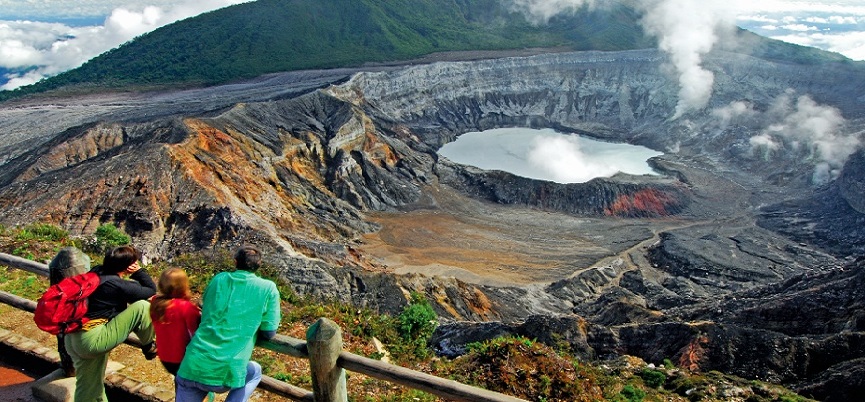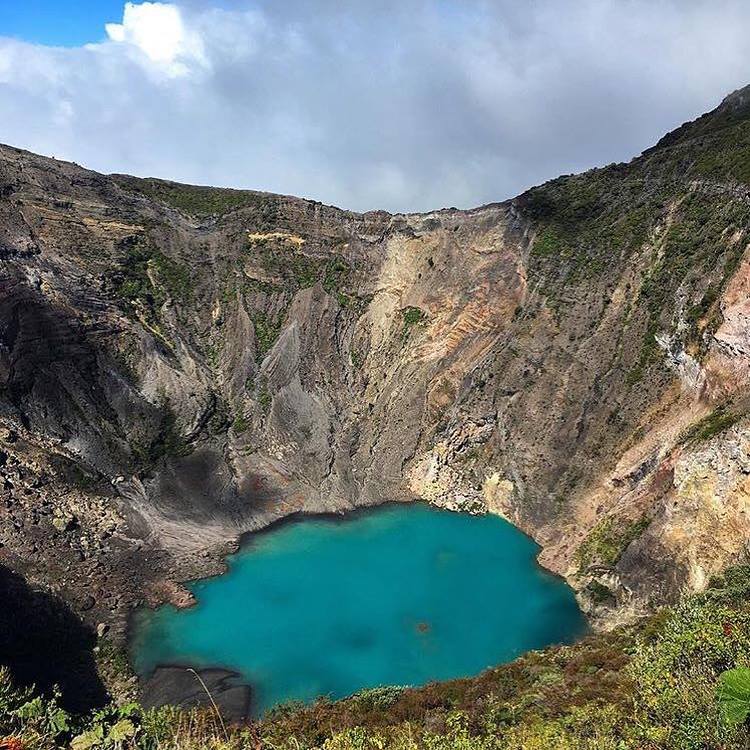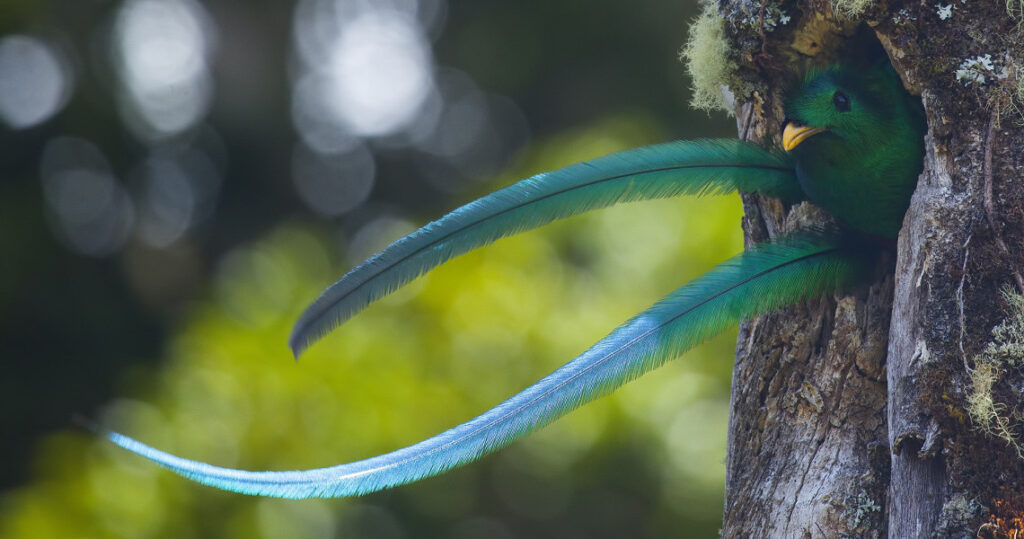The starting point for many travelers
A one night stay is usually recommended to leave early in the morning for the most important destinations.
Some easy-to-access attractions can be found in the surrounding highlands, where active volcanoes (Poas and Irazu) and the Braulio Carrillo National Park.
The Central Valley is the union of the main cities of Costa Rica, San Jose, Heredia, Alajuela and Cartago. It also covers cities or towns with smaller populations such as Palmares and Naranjo. More than half of the country’s population is in the Central Valley; it is also the center of all economic activity, major institutions and the government.
The Best things to do in San José
Alajuela
Naranjo
It is located five kilometers from Sarchí. It is an important agricultural place as well as a traditional and cultural city. The activities are designed to introduce you to an authentic Costa Rican lifestyle and culture, where the kind locals will make you feel part of the community. It is a territory that will make you feel and touch the elements that fascinate every visitor to our country.
Bajos del Toro
Questa città è una delle città più piccole e la sua posizione la rende una delle migliori fughe della Central Valley.
Bajos del Toro è stata ed è tuttora per molti anni una zona agricola e tutte le famiglie locali possiedono grandi appezzamenti di terra.
La cascata più famosa di Bajos del Toro è la Catarata del Toro. Questa spettacolare cascata ti toglierà il fiato mentre scende a 270 piedi nel cratere di un vulcano spento circondato da una foresta lussureggiante.
Un’altra bellissima cascata è l’escursione Catarata Rio Agrio, ottima per le famiglie o per chi non vuole camminare molto a lungo. È solo una passeggiata di 20 minuti in un modo e ti senti come se stessi camminando attraverso Jurassic Park! La cascata non è molto alta o ha un colore blu elettrico, ma la breve escursione è bellissima
Poas Volcano
It is active and has one of the largest craters in the world. Get to know this behemoth without traveling long distances. Not only does it have one of the largest craters in the world, but it is located in the forests of the Central Mountain Range, which boasts magnificent natural landscapes – this is Poas Volcano National Park. Being located in the Alajuela province, it offers visitors easy access from the country’s major cities. This place allows you to explore its attractions through a network of trails, especially in a cold climate tempered by a light drizzle that prevails most of the year. You can also enjoy the varied cuisine, worthily represented by fruits such as strawberries, as well as some dairy products. You can also appreciate the cultural manifestations of the communities surrounding the park, such as Poasito, Fraijanes, Varablanca and San Pedro de Poás. These are all recommended stops for a complete tour.

Cartago
Irazu Volcano
Being the tallest volcano in Costa Rica at 3,432 meters, Irazu is undoubtedly one of the most impressive natural attractions in the area. No notable activity has occurred since the 1990s, making the Irazu Volcano National Park an excellent place to see a spectacular crater.
The most popular part of the park is Sector Crateres. There is another area, the Prusia Sector which has more hiking trails.
Looking at it from the surrounding cities, you will see its iconic conical shape with smooth angular sides in the distance. But at the top it looks anything but conical with its five deep craters, some of which contain vibrant emerald green lagoons. The last major eruption was in 1994 and is now considered to be in a dormant phase. However, the smoking fumaroles scattered on the summit provide evidence that this volcano is still active.

Turrialba
It is located at the intersection of the South Pacific, the central valley and the Caribbean coast. This is where the famous pirate Morgan was defeated and driven back to the shores of the Caribbean Sea. This is where the first cocoa plantations in the country were established after the Spanish conquest. With temperatures ranging from near freezing on cold days on top of the volcano to tropical 35 ° C down in the city on hot days, all within a distance of 30km, the Turrialba region is unique in Costa Rica. altitude and ecosystems in a small area make it one of the richest regions in plant and bird species. The region is mainly an agricultural area, where sugar cane and coffee have played an important role for a long time. It is the cradle of sugar and macadamia nut production.
Il vulcano Turrialba rilasciava regolarmente nuvole di fumo bianco, il che spinge i primi coloni spagnoli a chiamarlo Torre Alba, che si traduce in «fumo bianco».
È il secondo vulcano più alto del paese. La sua altezza è registrata come 10.919 piedi, che furono stati misurati dall’estremità sud-est.
A 12 miglia a est di Turrialba, sulle pendici del vulcano Turrialba si trova il Guayabo National Monument, le rovine archeologiche più significative della Costa Rica. Questo sito precolombiano conserva un sito urbano abitato tra il 1000 a.C. e il 1400 d.C. quando la città fu misteriosamente abbandonata. Ora, più di 2000 anni dopo, esistono ancora un acquedotto funzionante, strade asfaltate, ponti di pietra, fondamenta di templi, case, tombe e incisioni rupestri. La giungla circostante è un paradiso per gli amanti degli uccelli.
Heredia
Sarapiquí
Sarapiqui is known throughout Costa Rica for its extraordinary and rich biodiversity, as well as for being the dream destination for those seeking adventure. Located in the northeast of the country and bordering Nicaragua to the north, Sarapiqui is now a very popular holiday destination for families and thrill seekers.
Enjoy the magnificent view of hills and valleys covered with tropical plants, experience river rafting on the area, admire colorful butterflies and hummingbirds or simply relax in your hotel listening to the sounds of nature.
Sarapiqui is a virgin tropical jungle that is home to hundreds of wildlife species such as snakes, frogs, birds and mammals. Nature and wildlife mix here offering its visitors a truly fantastic place to discover.
San José
San Gerardo de Dota
San Gerardo de Dota is a little-known destination in the remote mountains south of Costa Rica’s capital, San Jose. The village is located deep in a valley, but is surrounded by the towering mountains of Talamanca. Among the peaceful forests of San Gerardo de Dota live a variety of animals and a wide selection of birds, including the famous Resplendent Quetzal and dozens of hummingbird species.
San Gerardo de Dota Costa Rica offers you the opportunity to see the incredible Savegre waterfall, you can explore the mountain on foot or on horseback, to reach this amazing place, the clear and fresh water is the perfect scenario to forget the hectic world and breathe fresh air.

Chirripó National Park
Cerro Chirripó is Costa Rica’s highest mountain. At 3,820 meters above sea level, it offers hikers sweeping views of the surrounding Talamanca Mountains. Hikers reach the spectacular summit of Chirripó via a 20km trail that climbs 2,000 meters from the tiny village of San Gerardo de Rivas.
The number one attraction in Chirripó National Park is climbing Cerro Chirripó Grande, the highest peak in Costa Rica. The views are spectacular, on a clear day, you can see the Pacific Ocean and the Caribbean Sea at the same time.
Along the way, hikers pass through rainforests and páramos, a unique ecosystem found only at high elevations in the tropics of the New World. From the summit of Chirripó, sweeping 360-degree views descend over pretty valleys and sparkling lakes.
This is one of Costa Rica’s wildest national parks, yet relatively accessible on foot. Much of the land has been protected from development and exploitation due to its inaccessibility. In addition to the challenge of climbing Costa Rica’s highest peak (Cerro Chirripó), there are miles of trails that wind through more ecological zones than you’ll find in most entire countries.